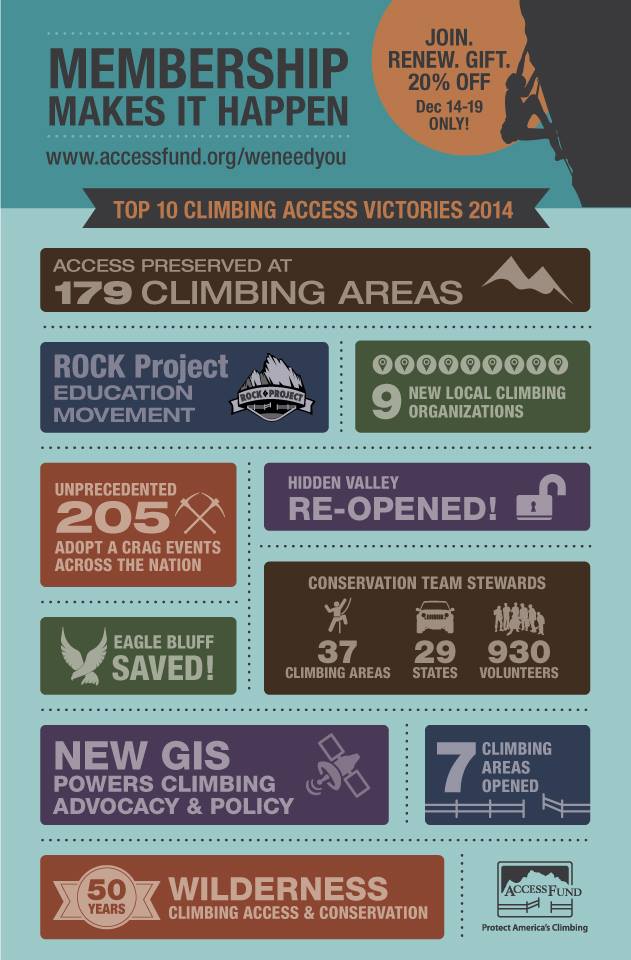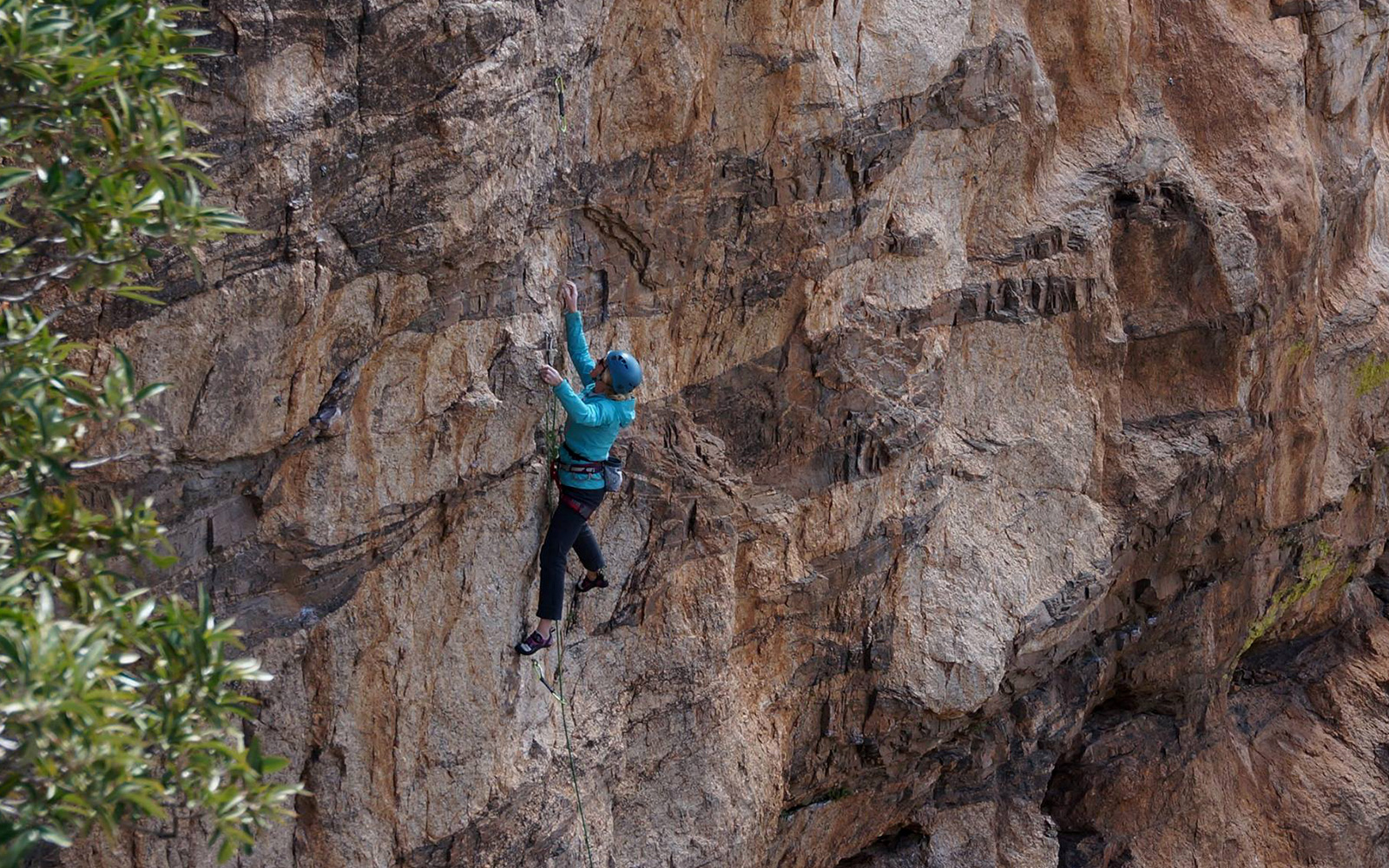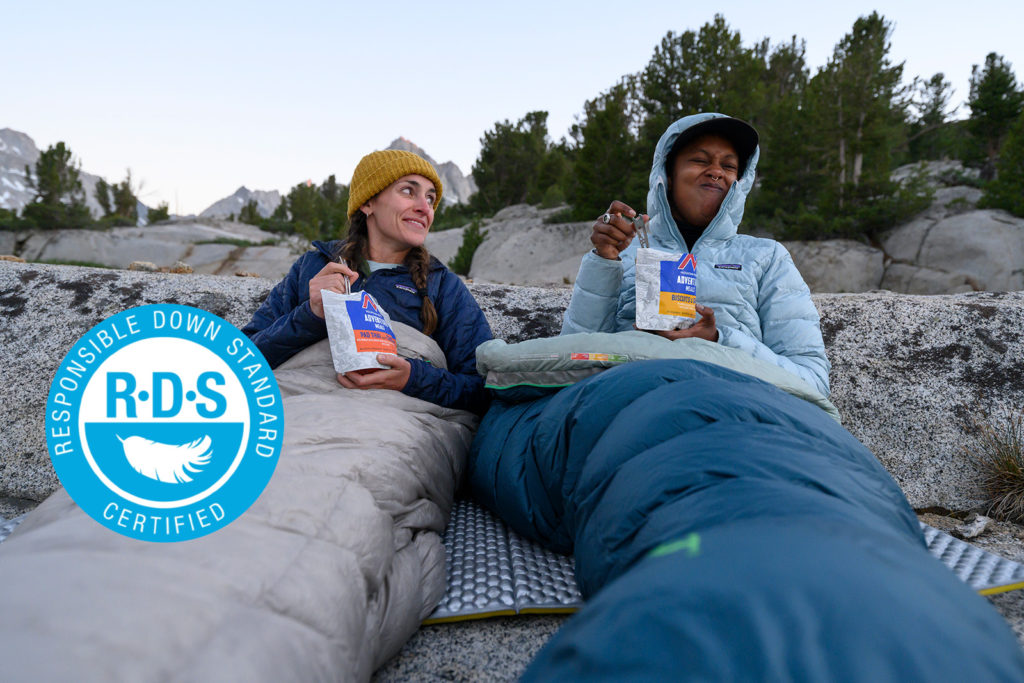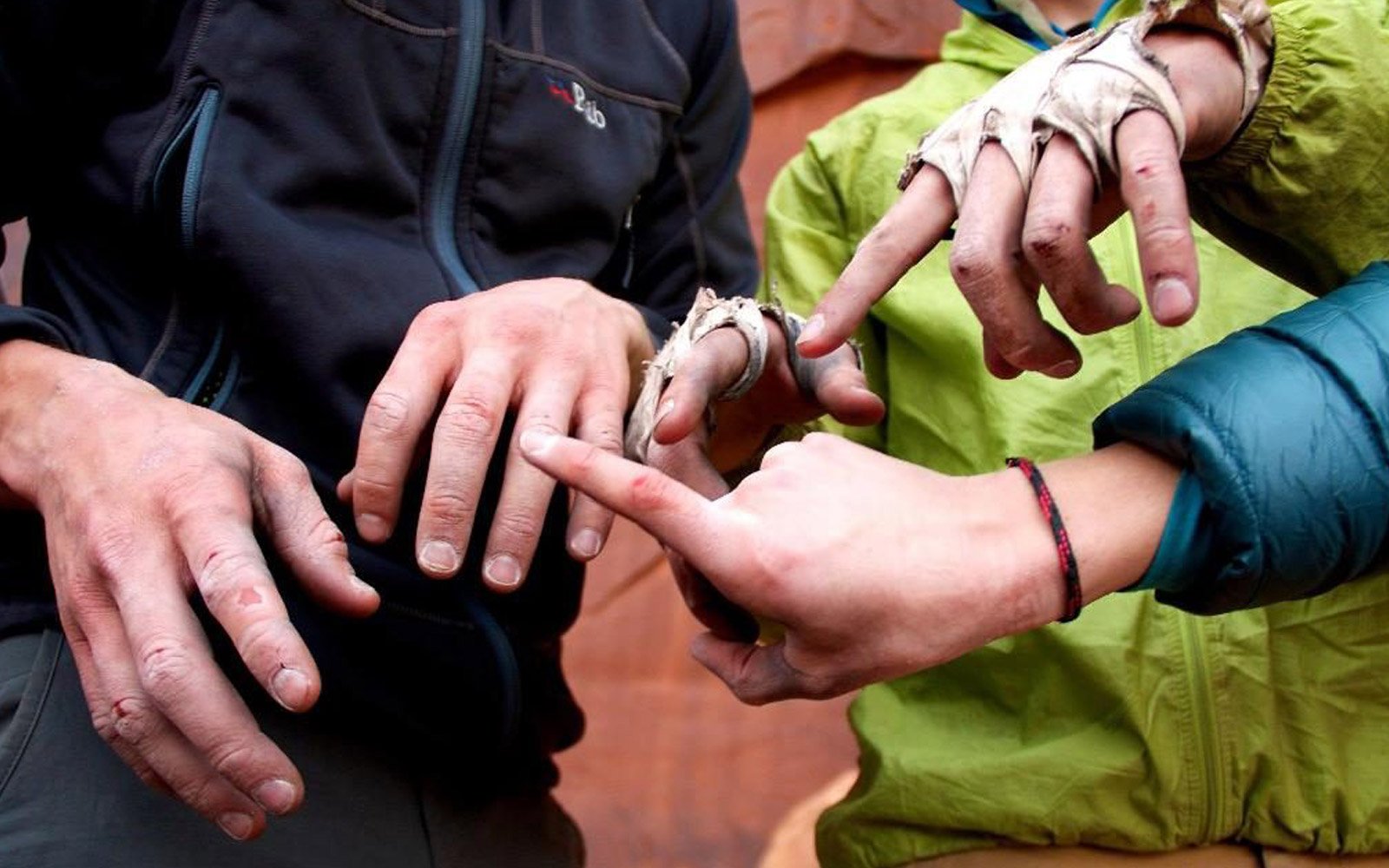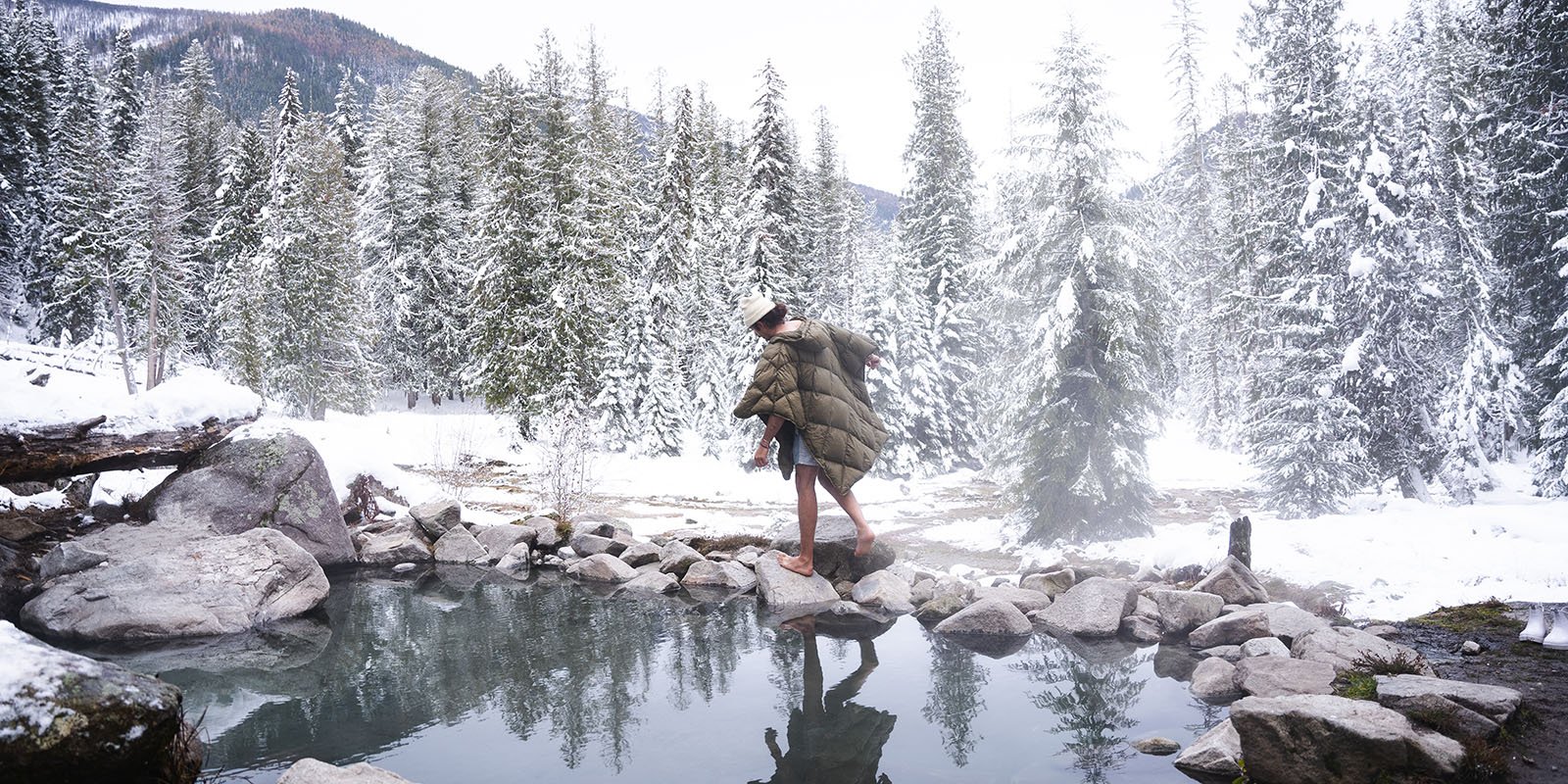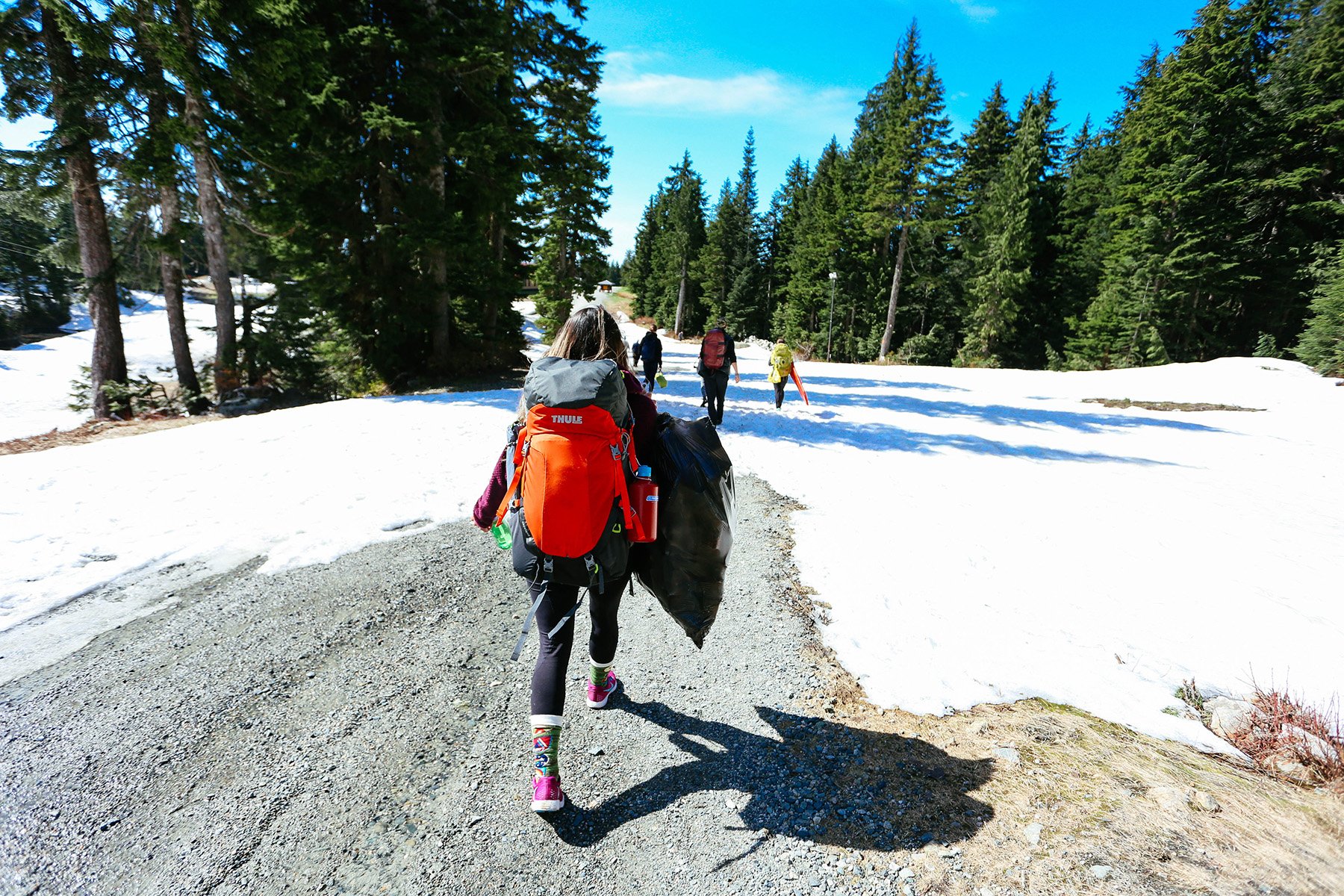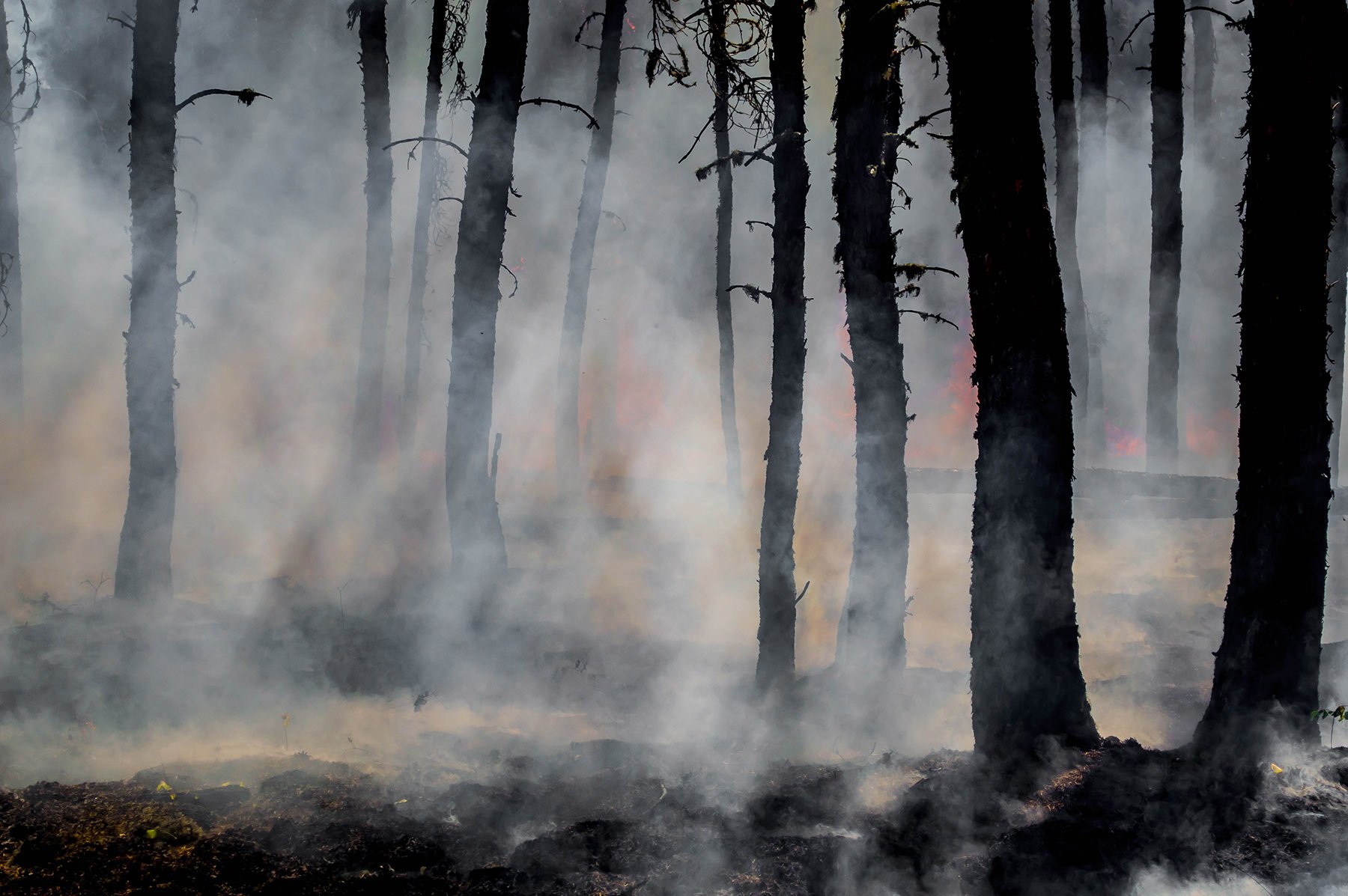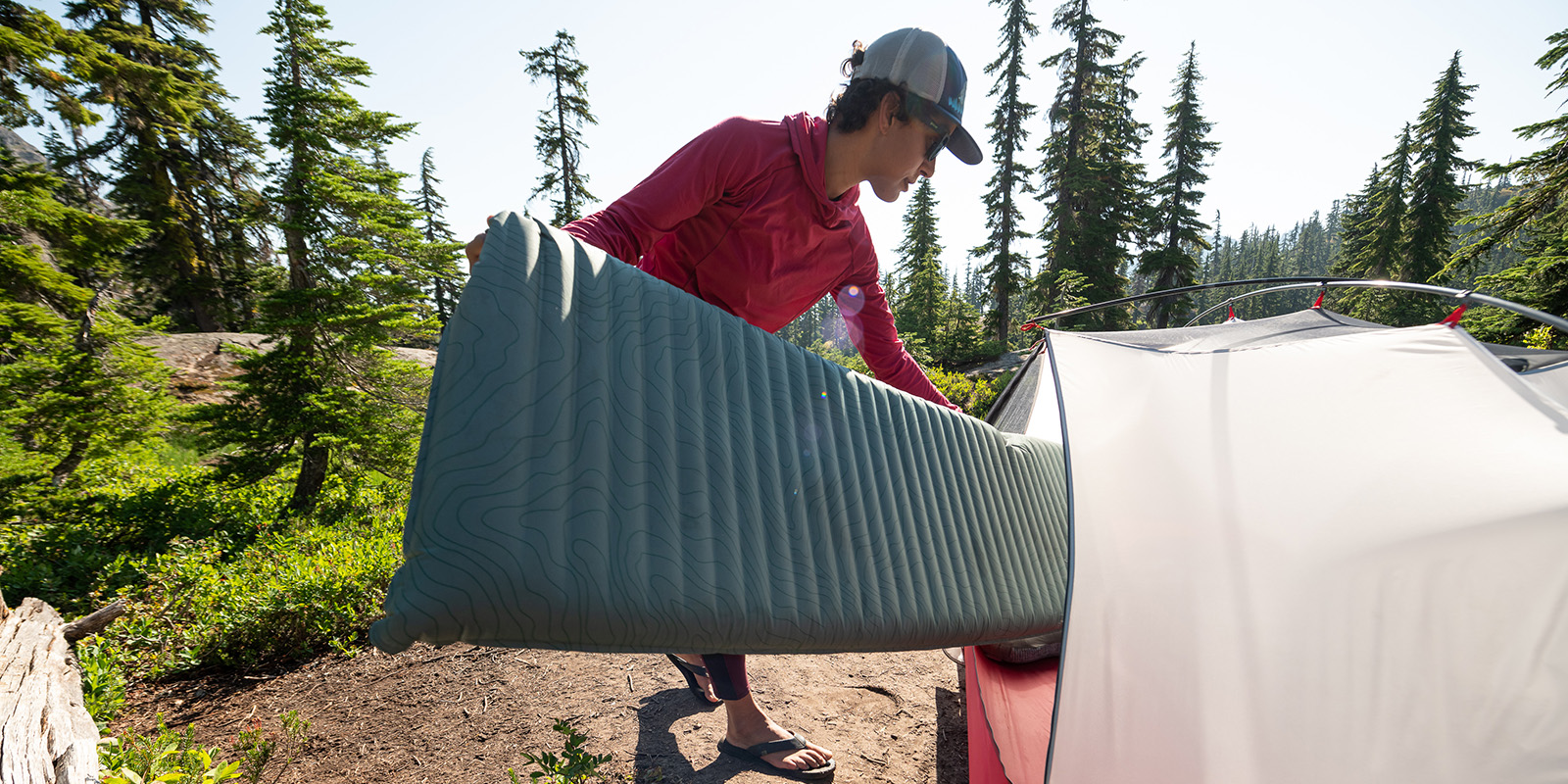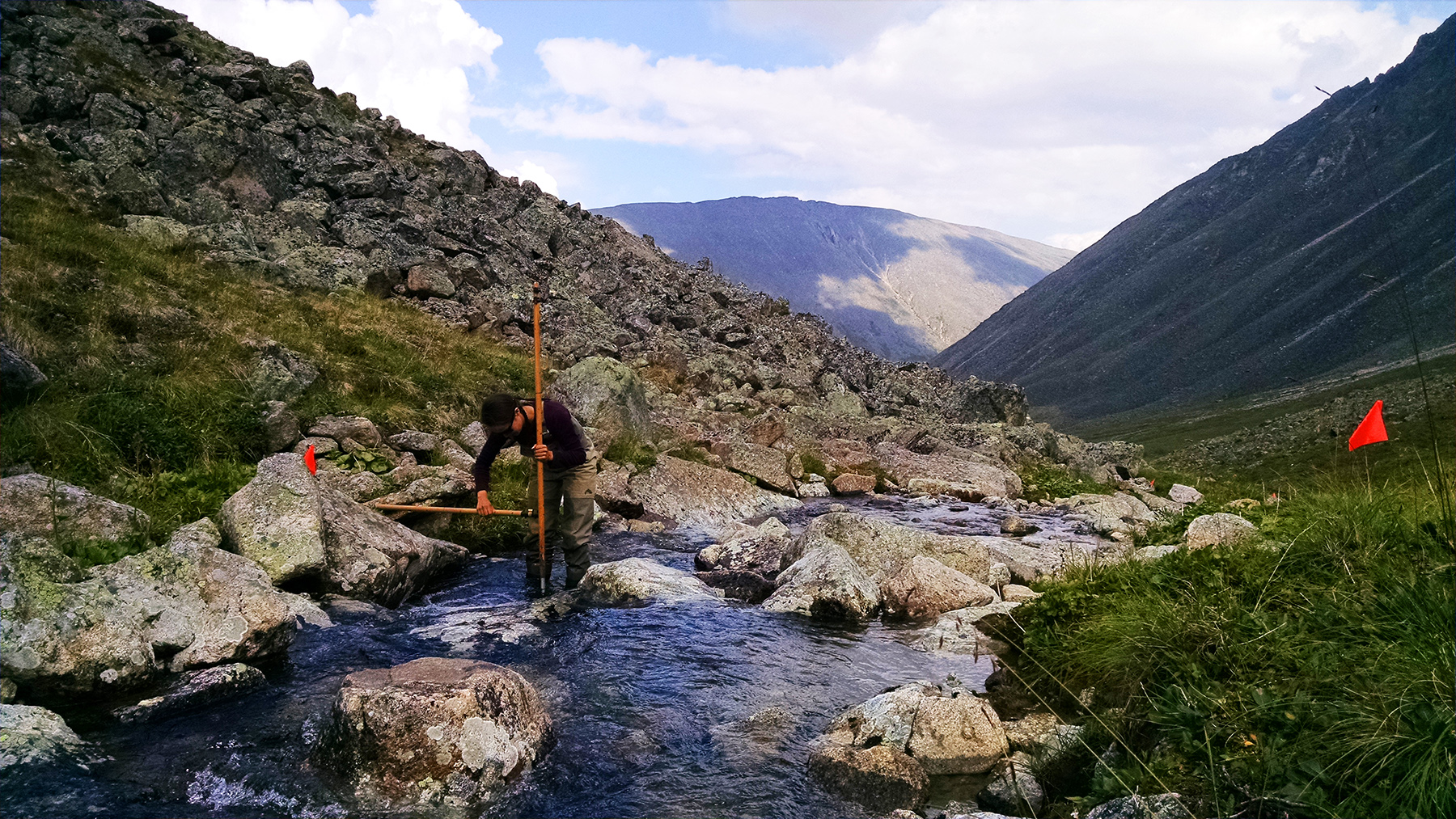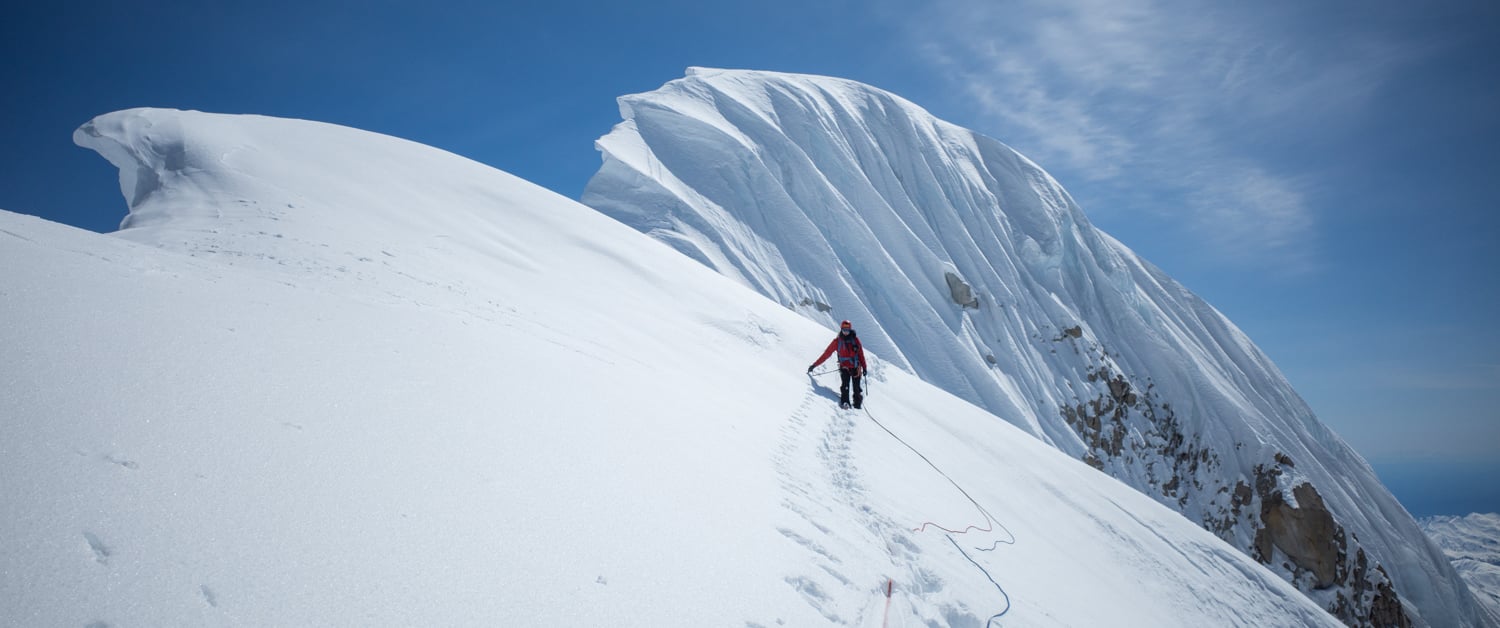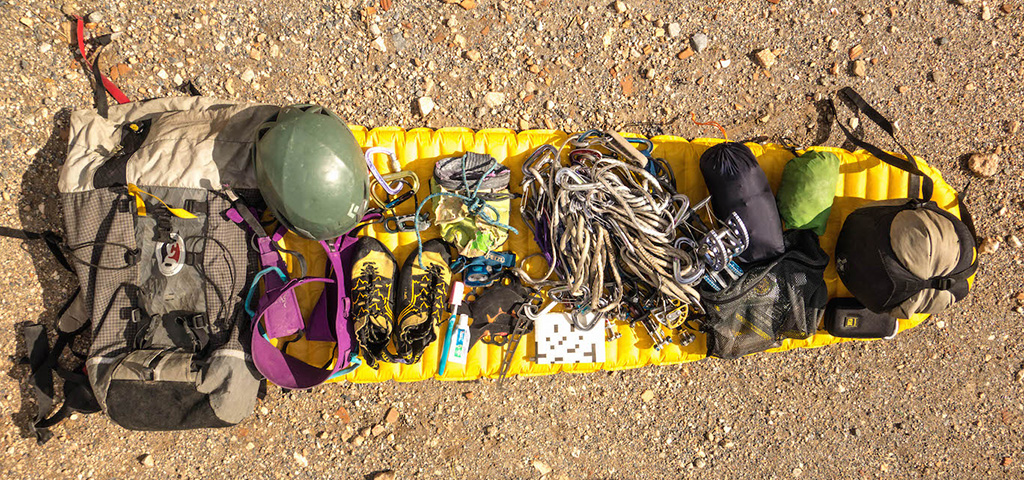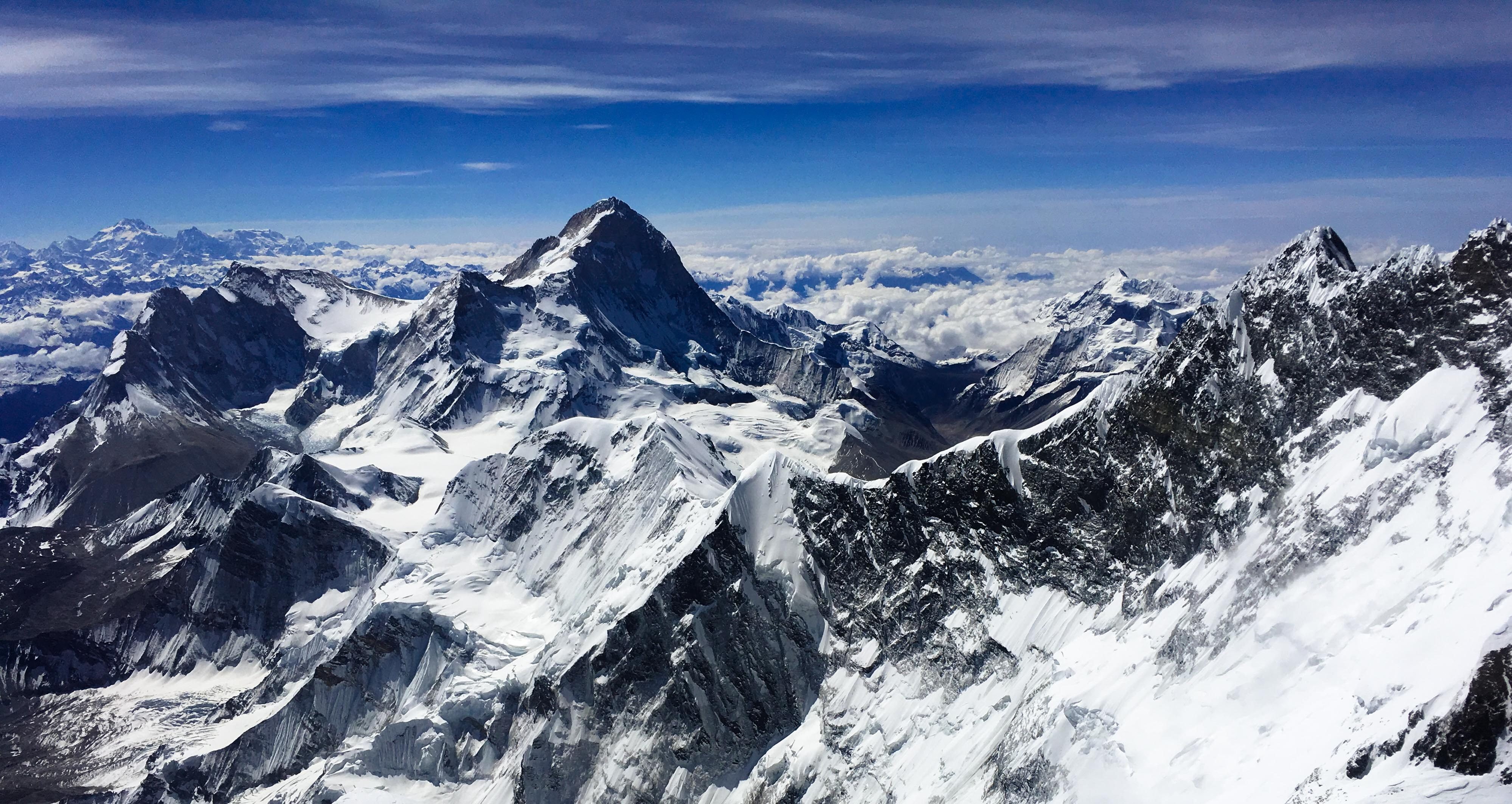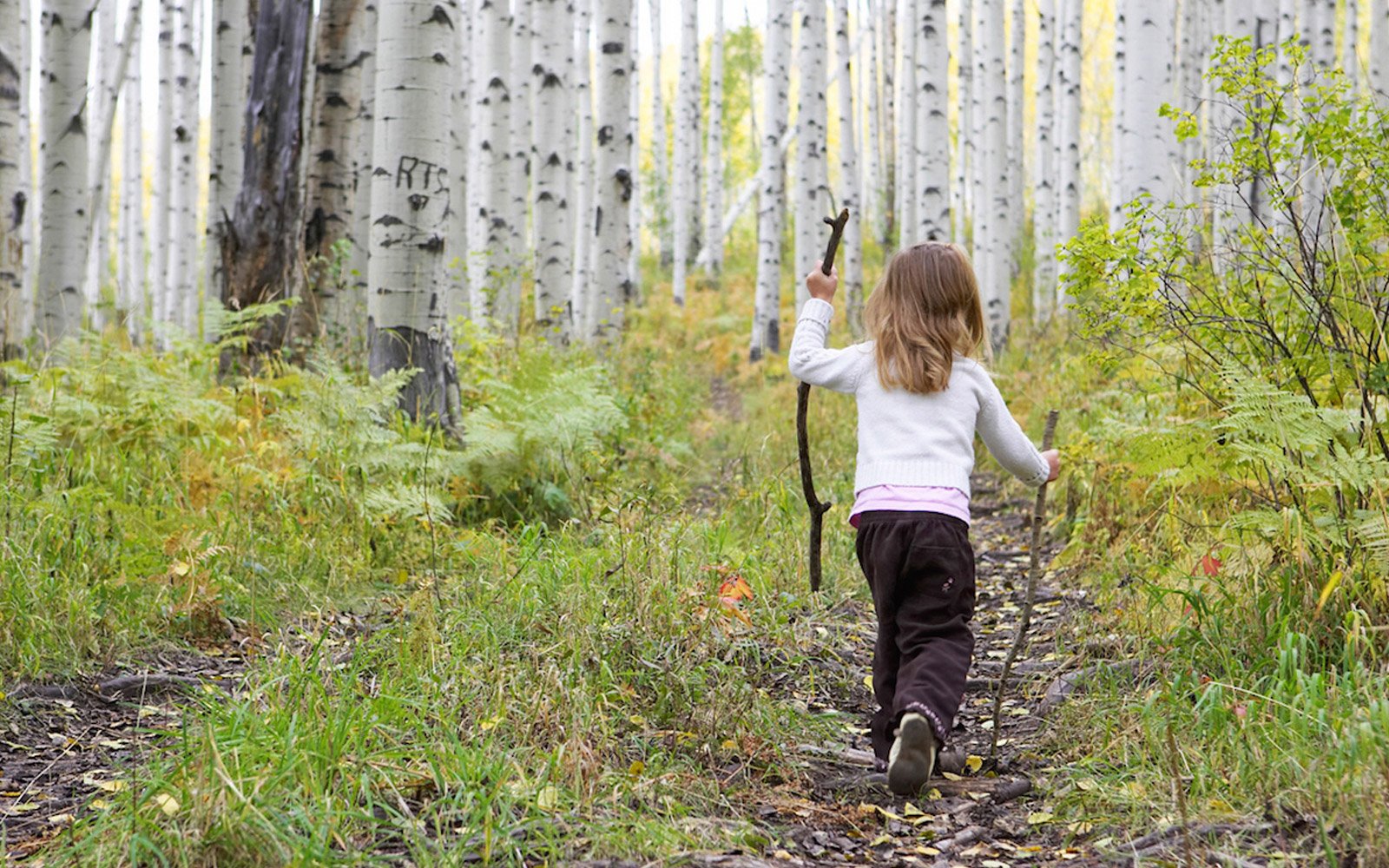Ever wish you could do what you love for a living? What if backpacking, road-tripping or paddling paid the bills?
Meet Mike Morin and Amanda Peterson, aka the Access Fund Conservation Team. Sponsored in-part by Therm-a-Rest, this dynamic duo has a love for climbing, and they went all in to chase their dream.
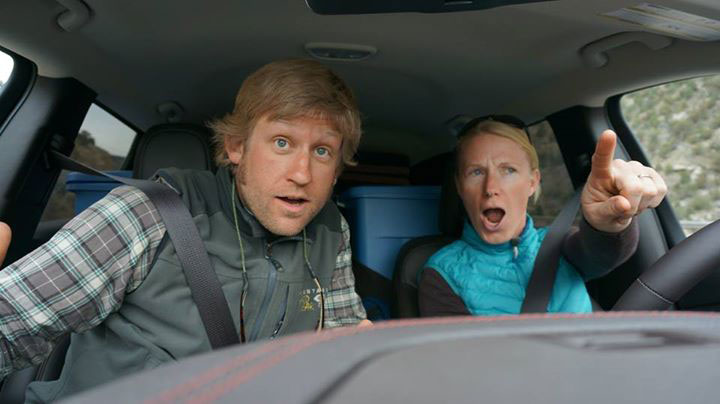
Originally from Maine, Mike moved to Colorado to become a park ranger. There, he fell in love with climbing while “venturing into the mountains and looking for more interesting ways to get to the top.” Amanda grew up in Colorado, hiking and camping with family, but fell in love with climbing when she fell in love with Mike.
The two met while working at Colorado’s Jefferson County Open Space, an organization that worked with the Access Fund. Mike’s park ranger and recreation manager background plus Amanda’s experience in education and trail building made them ideal candidates for something that very few people can do: Hit the road 10 months a year to help preserve climbing areas and access, and take in a little climbing along the way.
The Access Fund is the national advocacy organization that works on a broad range of access, stewardship and national policy initiatives. The Access Fund’s Conservation Team (Mike and Amanda) works to protect climbing areas across the country through education, conservation, advocacy and support of local climbing organizations. The Team engages with core groups of climbers in a given area to show them the right way to build walls, stairs, etc. so they can learn to take care of those areas on their own.
So, is it as good as it sounds? We asked Mike and Amanda to tell us about their jobs:
1. What is a typical day in the life of the Conservation Team?
A: There is no typical day, but this is a typical week:
Mon: Leave our current location; travel to next one—within a day’s drive away.
Tues: Day off!
Weds/Thurs: Arrive at new location, make camp, do site visit, and meet liaisons to plan our event. Do climbing gym visits to get the word out about the Access Fund and call for volunteers. Listen to issues from local community and do youth outreach.
Fri-Sun: Set up and work with volunteers on the local climbing area event.
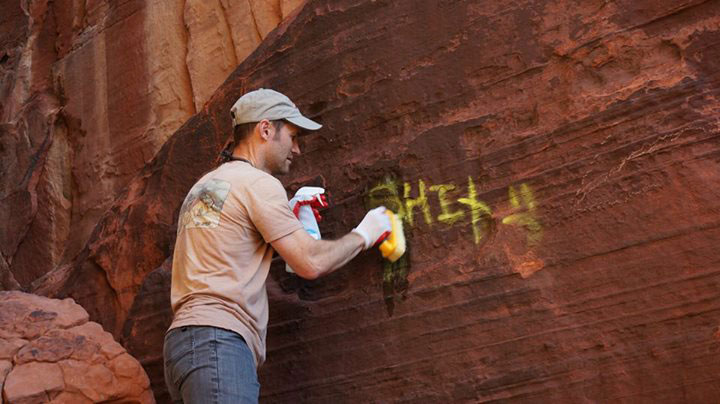 Cleaning the you-know-what out of the rock.
Cleaning the you-know-what out of the rock. The new approach for Pistol Whipped in Indian Creek
The new approach for Pistol Whipped in Indian Creek2. With a rigorous road schedule, what happens if you get sick?
M: Living on the road is the healthiest thing we’ve ever done! It’s not like being confined in an office.
3. Is it possible to have a work-life balance?
M: Work and life bleed together. As much as we do work and put in hours to accomplish our goals, we also intermix that with an opportunity to go on a bike ride, or a hike, or climb—every day.
A: Yep, we seize the day. We’re lucky we are working most weekends so we can climb on weekdays and avoid the crowds.
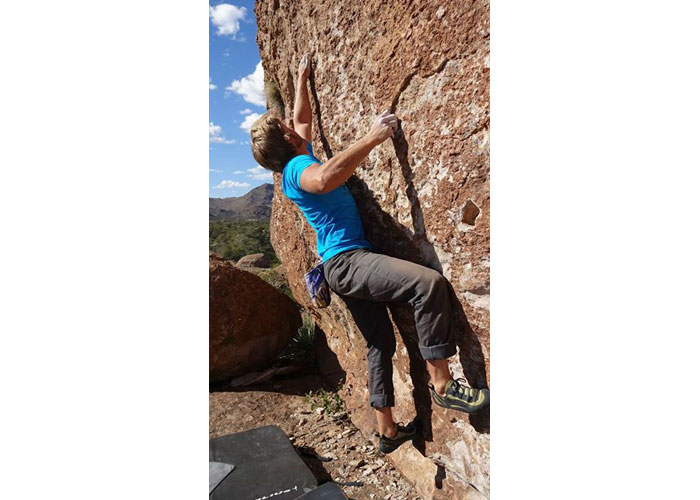
4. Some may say you have a dream job—climbing and getting paid?
M: They are right. We are totally grateful for the opportunity we have. Having done this now for over a year, we have built a community all across the U.S.
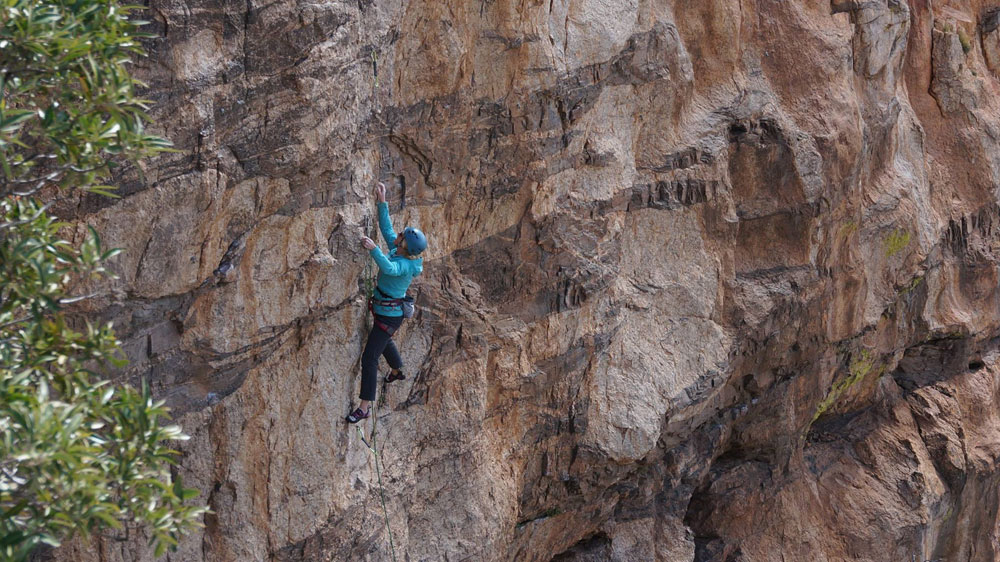 Sneaking in a climb at Mt. Lemmon.
Sneaking in a climb at Mt. Lemmon.5. Being on the road all year, you must visit a lot of drive-thrus?
M: Actually, we don’t eat out much at all. It’s cheaper and healthier to prepare our own food, so we do that as much as we can.
A: We use a double burner camp stove and a cooler; it works quite well.
6. What’s your favorite camp food? Do you get in a rut?
A: Tacos, stir-fry and pasta are the most common camp meals. I do like a camp version of French Onion Soup. And on a big event day, we do Green Eggs & Ham (hard boiled eggs, ham and avocado all wrapped in a tortilla). Tonight we’re having broccoli and beef stir-fry.
7. It’s hard to imagine camping ALL THE TIME—what do you sleep on each night?
M: I have Therm-a-Rest Antares™ down bag.
A: I have the Mira™ Women’s down bag and we each have a NeoAir® Camper mattress. It’s nice and thick and easy to pack down, which is important because space is at a premium. We also love our Treo™ camp chairs and the Slacker Hammocks. Hammock time is a nice way to wind down.
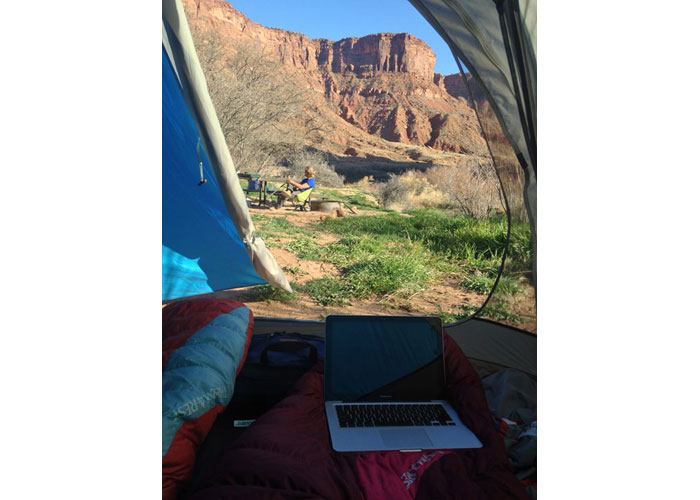
8. What’s your favorite climbing spot since you started with the Team?
A: We both fell in love with Chattanooga—it was a combo of climbing and community. We spent two weeks there and had a great time. And in Bishop, California, by luck, we hooked up with an international climbing group. We became a cohesive group for a week, climbing by day and having huge potlucks and campfires by night.
M: We also love Joshua tree, City of Rocks in Idaho, the “Gunks” (Shawagunks) in New York, and Seneca Rock in West Virginia.
9. What are you most looking forward to on the 2015 tour?
M: Honestly, reconnecting with everyone we met last year. We are doing our route in reverse this year.
A: We are also doing several weeklong stewardship trainings in Yosemite, Salt Lake and Kentucky. These will be in-depth weeklong experiences for volunteers interested in playing leadership roles in their climbing areas.
10. Got any advice for others to help pursue a passion for the outdoors?
M: You don’t know till you try. We now know a lot of folks like ourselves that have similar gigs, like working for Leave No Trace, or being brand ambassadors. There are a surprising amount of opportunities out there, you just have to keep your eyes and ears open, and really put yourself out there.
…And we say all this on our cell phone while sitting outside Indian Creek, Utah, staring up at the La Sal Mountains near Moab. Not a bad place for an interview :).
Want to join Mike and Amanda’s efforts at a climbing area near you?
Check out the Conservation Team Calendar and come out to volunteer—you don’t have to be a climber!
Here’s what the Access Fund accomplished in 2014:
